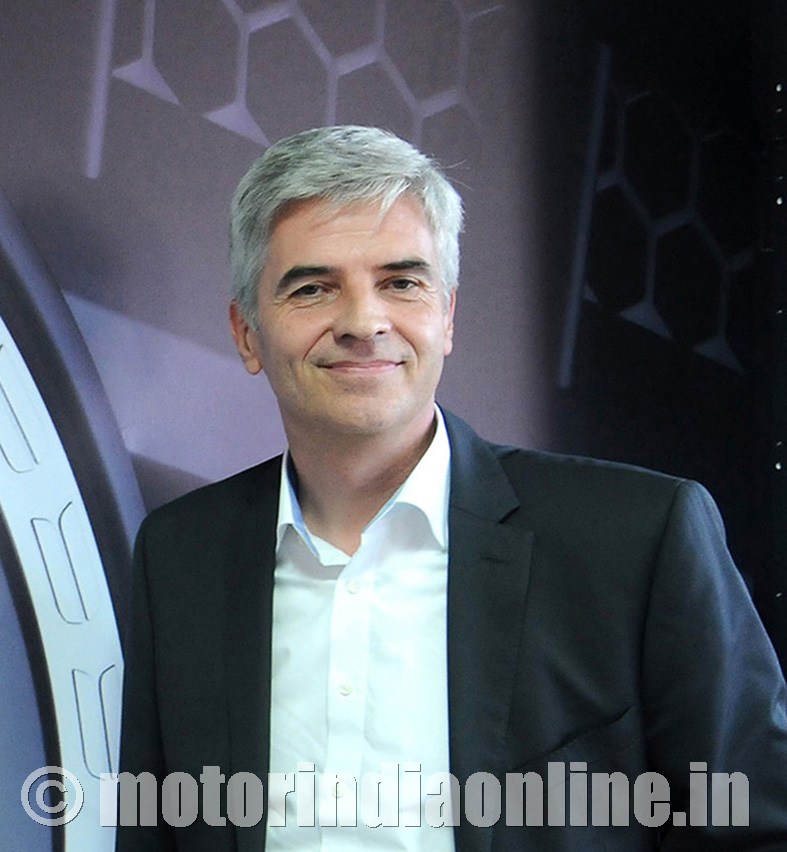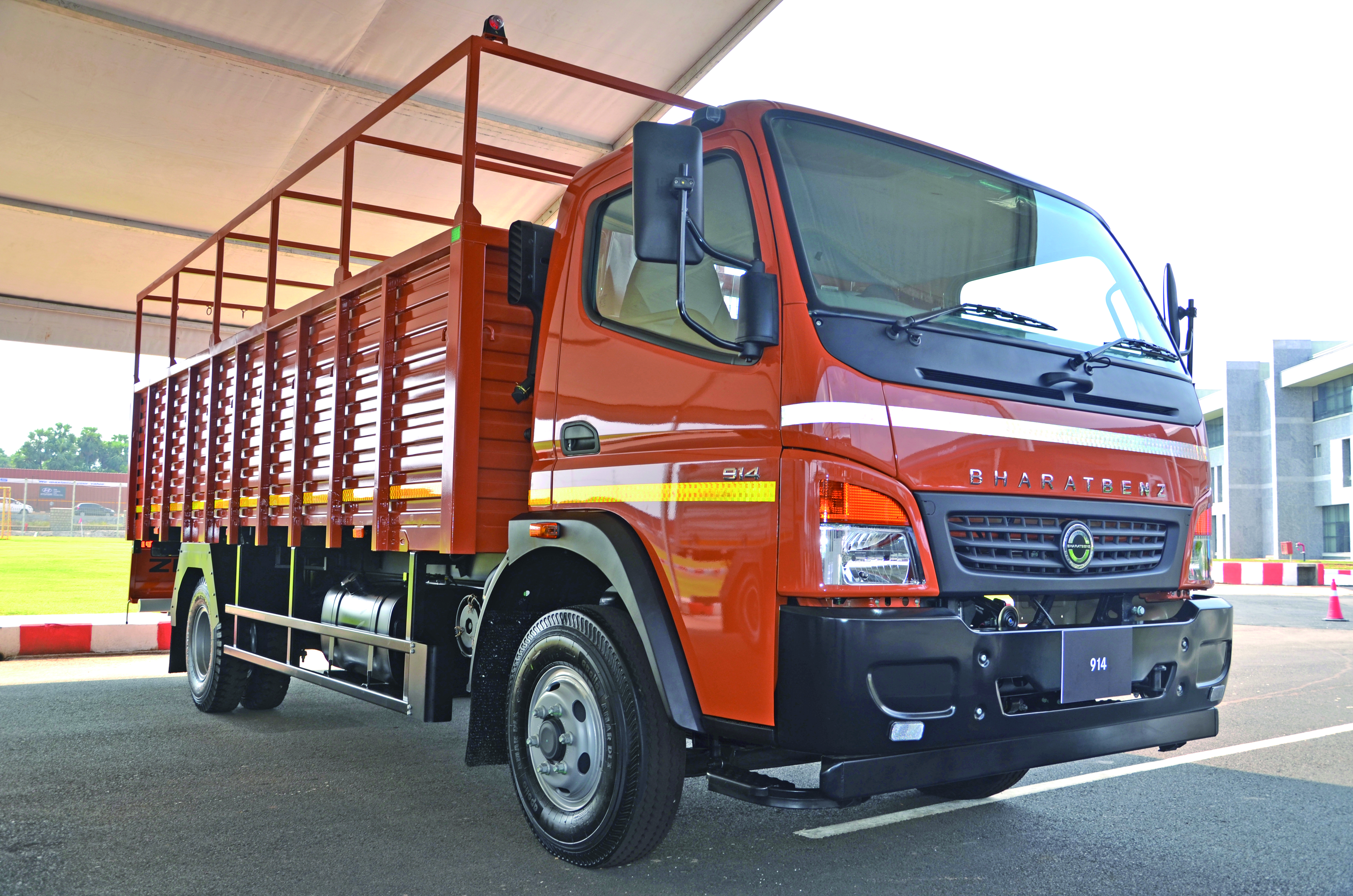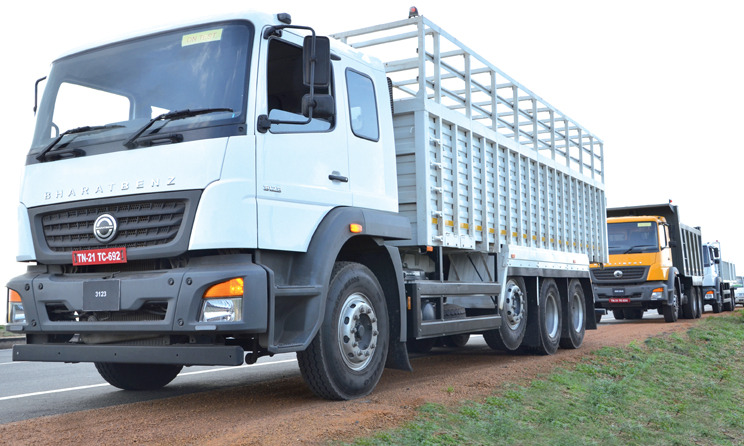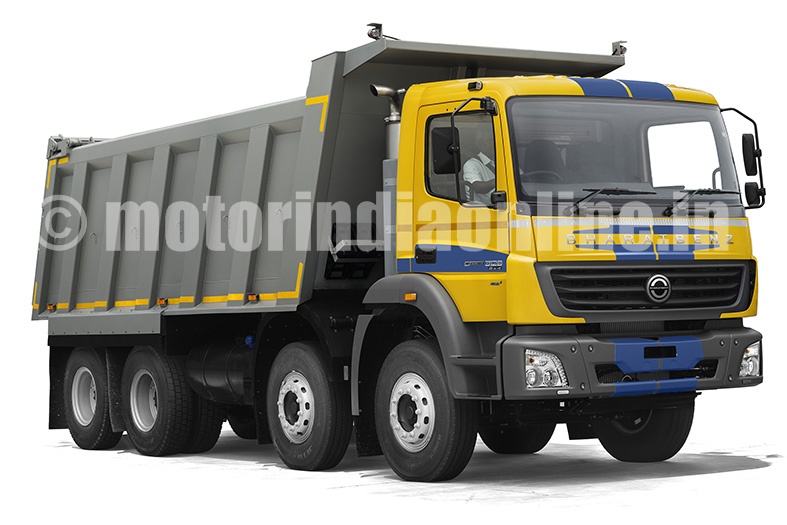Leveraging localisation, innovation and technology
“Gentlemen, if you want to beat the Indians, you have to think like Indians, relax, eat, play like Indians and if it has to be, dance like Indians; and fly like Indians?, absolutely,” says the coach to the German team taking on the Indian cricket team in one of the world’s leading airlines Lufthansa’s India operations advt. clip – to convey the message about being ‘More Indian than you think’ promotional campaign. This has caught the attention of air travellers in a big way and the commitment message well appreciated; and Lufthansa’s image and market share bound to improve of course backed by their ground level transformation as cited.

In this context, it will be interesting to note that another German behemoth has already implemented the above strategy with thumping success and achieved impressive results in the competitive Indian commercial vehicles market. Starting production in their greenfield plant near Chennai during 2012, within a short period of 5 years, they have crossed that momentous milestone of 50,000 trucks recently and for the first time cornered double digit market share in the M&HCV segment. Well, the company is none other than the world leader in the CV terrain, Daimler and their Indian outfit Daimler India Commercial Vehicles (DICV), Chennai has chiselled out many records during their five year journey in India.
“If you want to make it in India and be successful in the truck market which is tougher than the cars segment, then the venture has to be local and it just cannot be a name change. Why have some failed and we have been successful is because of our high level of localisation, up to 93%. By the end of the year we will sell in 40 different countries on four continents. We are currently dealing with 4 different brands from the Chennai plant, BharatBenz for India, Nepal and Bhutan, Fuso across the globe, Mercedes-Benz for Indonesia and Freightliner for Mexico, which was just launched in November”, says Mr. Erich Nesselhauf, Managing Director & CEO, DICV, during a freewheeling exclusive interview for MOTORINDIA. He adds that Chennai plant of DICV is the only one of its type in the Daimler Group manufacturing of trucks, buses and engines and dealing with four different brands – a rare distinction indeed. Read on for his erudite insights about their Indian operations since 2012 and the plans to retain the numero uno status as the technology leader in the domain-edited excerpts follow.
Memorable milestones
The first milestone is always an enduring one and for DICV it happened in 2012 when they began commercial production at their Oragadam plant. Ever since the start, DICV has been scaling one peak after another and some milestones crossed being more special than the others. Mr. Nesselhauf replies: “It is really a daunting task to set up a new plant in a new country where you have no customers. So achieving the first 10,000 vehicle sales in April 2014 was quite a statement and a significant milestone for DICV, because selling the first 500 trucks is always easy but crossing the 10,000 unit mark in the market means that the vehicles are indeed working to the expectations. Setting up a dealer network to meet the pan-India service requirements was another momentous milestone. Also getting the first export order was an important achievement. What is produced in India has to be accepted by the overseas customers and a lot of convincing needs to done vis-à-vis production capabilities. For me the proof of the pudding is in the eating and we have not only sold to the local customers but also supplied the vehicles in the quality-conscious and demanding overseas markets. Interestingly the 19 ton and 16 ton vehicles which are not popular in India meet significant demand in the exports market. The demands are thus complementary. Our products for India and each export destination are tailored to the specific market and customer needs, but of course all fulfil the same stringent quality standards, which we stand for as Daimler.”
Challenges and opportunities
Many of the overseas companies entering India to set up their business have always felt it as a tough and challenging market and DICV’s viewpoint has been no different. Answering that query, Mr. Nesselhauf explains: “First step in meeting up to the challenge has been in localisation and we did this successfully. Many of the firms entering India cannot cross this hurdle. Next is the technology issue. How long India can put up with underpowered, unreliable and polluting trucks susceptible to breakdowns? In this regard, BS-IV has been a good move and so also the planned shift in short time to BS-VI. It’s always easier to upgrade and in this regard we already have the technology. What then plays against? It’s the local regulations and enforcement. We still have old BS-I and BS-II trucks plying on the roads, causing pollution and Delhi case is a glaring example of the likely scenarios to come. Technology is available but then it comes at a cost. If the customer does not pay, ultimately the society has to pay for it dearly in the long run. Yes, OEMs understand and implement measures to meet the standards but who will control the oversized trucks and unsafe buses plying on the roads? India’s homologation standards are tough and on par with that in Europe and US but the ground level realities are very different. The objective seems to be in getting the number plate in the absence of strict enforcement. If the fleet owners do not comply with regulations, it will continue to be a tough situation for new entrants.”
In the Indian context, starting off in the 16 ton & 25 ton range, DICV has expanded its range upwards and downwards by adding various modes covering the complete spectrum from 9 ton to 49 ton. What about adding higher range beyond 4928, viz., for higher HP models and going below 9 ton especially with Fuso brand being strong in that range? Mr. Nesselhauf elaborates: “If the correct load rating regulations are followed, power to weight ratio for a higher HP model does not compare favourably with that of the lower HP vehicle. Going beyond 280 HP is an option but it will happen over a period of time. Going sub-9 ton will take some time as our current focus as a company is on exports where we have orders. Also DICV focusses exclusively on FBV (fully-built vehicle) and does not supply cowl type chassis. Actually Cowl trucks can be found only in India and with BS-IV reality and stricter cabin safety norms coming in, cowl will soon become history. DICV can supply FBVs as per customer requirements and the same can earn money for the customer from day one – cutting out all the time delays in cabin building, load body fabrication and assembly. We see big opportunities opening up for OEMs in the FBVs. In the tipper segment, the 3143 model which we launched for the mining application was aimed at offering a competitive solution against the imported European trucks. But because of the stagnant mining business and the good demand in export applications, we are now rather exporting them, of course with advanced tech features and auto transmission for the applications, sold under the Fuso or Mercedes-Benz brand. Exports have thus given us that flexibility and meet the demands for varied brands from a single production line. We also export CKD kits for subsequent assembly at Daimler plants in Indonesia and South Africa or at a partner’s location like in Kenya.”
The bus foray for DICV started in 2015 with the first launch of 9 ton school bus and later on the staff and tourist variations supplied as FBV. Next was the 16 ton chassis model and recently the first intercity coach was built by an independent body builder. In the bus segment in line with international trends, DICV has started supplying the 16 ton bus chassis for body building by independent bus body builders. However in such a case, body builder has to closely follow the Daimler global standards and work collaborating with DICV. While 9 ton and 16 ton buses are under BharatBenz umbrella, in the multi-axle 25 ton range, it’s a Mercedes coach totally built by DICV and the same targeted for domestic market. DICV also exports bus chassis 9 ton and 16 ton for subsequent bus/coach building by body builder in the destination country again as per Daimler standards but suiting local design and style preferences.
Technology trends
BS-IV regulation has been one of the major disruptions in the recent times with OEMs pitching in with EGR and SCR as the solutions to meet the new standards. DICV has opted for the proven SCR technology implemented by them for global markets and opines that also as the solution for BS-VI. “In DICV BS-IV vehicles, the AdBlue that is added in the exhaust gas stream is only a fraction of the fuel consumption, viz., in normal operation condition, indicative consumption ranges between 3 and 5 ltr per 100 ltr of diesel although actual consumption may vary depending on driving characteristics and engine duty cycle,” points out Mr. Nesselhauf. Another major tech trend seen is in the safety aspects against the disturbing trend of increasing number of road accidents. Several initiatives have been taken by OEMs and Mr. Nesselhauf asserts: “What is more important is the active braking system, viz., systems for collision prevention and maintaining a safe distance behind vehicle. Driver monitoring systems are also useful in ensuring that he is alert during the time spent behind the wheel. More importantly to reduce accidents, it will be useful to focus on quick wins that can be achieved by auditing the existing lighting systems, mirror effectiveness and braking systems. For example, the braking distance is critical in heavy vehicles and in our case, the same will be significantly lower ensuring better vehicle control and avoiding accidents. As regards rigid truck models, we are convinced that multi-axle high-tonnage vehicles are not the way forward for long haul applications and tractor trailer will ultimately take over as they are cost economic and technically the better option.”
Diesel has become a dirty fuel world over and electric option the new darling of the CV world. This global trend has already percolated down into the Indian terrain with the govt announcing several new measures to protect the environment and propel the electric future. While the autonomous driving may take some more time to take root in India, electric trucks seem to be around the corner. Mr. Nesselhauf opines: “We can produce electric trucks anywhere be it in Japan or India but the important issue is whether India is ready with the infrastructure to service the same? Charging stations require high capacity reliable power supplies and if it becomes a reality, electric route will be successful. We have also been talking to Indian component suppliers and they are pretty undecided about the way forward. There is definitely the possibility to introduce our smaller truck for example in Mumbai but again the infrastructure has to be in place”.
Henry Ford one of the doyens of the auto domain said: “Coming together is a beginning; keeping together is progress; working together is success.” Well, DICV has demonstrated at ground level the above wisdom statement in no uncertain terms and all set to step on the gas for expanding its local and global business operations; and yes, we are for sure going to to hear many more of DICV’s exploits in the days to come.


